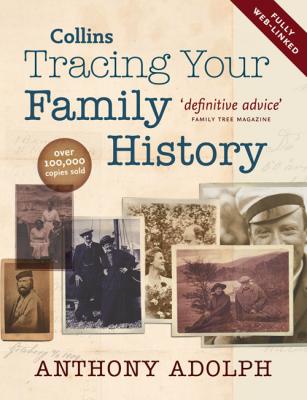Collins Tracing Your Family History. Anthony Adolph
Читать онлайн.| Название | Collins Tracing Your Family History |
|---|---|
| Автор произведения | Anthony Adolph |
| Жанр | Справочная литература: прочее |
| Серия | |
| Издательство | Справочная литература: прочее |
| Год выпуска | 0 |
| isbn | 9780007373567 |
Genealogists were universally disconcerted by M.W. Foster’s A Comedy of Errors, or the Marriage Records of England and Wales 1837–99 (M.W. Foster, 1999), which revealed that up to 5% of marriages recorded by local registrars never made it to the registrar general’s records. So if you cannot find the marriage you want in the GRO indexes and suspect you know where it took place, try the local registrar.
The Wedding Breakfast by George Elgar Hicks (1824–1914).
DEATHS
The indexes give:
The deceased’s name
The district in which they died
A reference number
Age. For the early decades they do not include ages, so a reference to someone who you thought was your 90-year-old great-great-grandfather might turn out to have been a day-old baby. Between June 1866 and March 1969, they include the deceased’s age, and after then the date of birth is given.
Most people tended to marry around their twenties, so it is often easy to guess very roughly when people’s marriage and births might have taken place. The same is not true of deaths and this, coupled with the sparse information given in the indexes before 1866, tend to make death searches difficult. Here are some pointers:
A marriage certificate will often state whether the bride and groom’s fathers were alive at the time.
You can get an idea of when someone might have died by their appearance or non-appearance in some of the fully indexed census returns (see Chapter Six).
Elderly relatives can give you an idea of when someone might have died simply by virtue of whether they can remember them or not, so if 87-year-old great-aunty can remember someone, you know that person must have died less than 87 years ago.
Because death indexes are so uninformative, it can sometimes be easier to look for the person in the indexes to wills first (see here). This will give you a date of death, and you can then buy the death certificate to learn their age.
LIFETIMES: JULIA LITTLE
THE DEATH CERTIFICATE of Julia Little is reasonably typical in the sort of information it contains. She died on 17 May 1876 at 17 Stockdale Street, in the sub-district of Howard Street and registration district of Liverpool. She was a female, aged 32, wife of Thomas Little, a shoemaker, and died of:
‘excessive drinking, 12 months, certificate received from Clarke Aspinall, coroner for Liverpool, Inquest held 20th and 29th May 1876.’
Death certificates record the following:
Name
Date and place of death. This will usually be the deceased’s house. However, hospitals were usually recorded simply by their postal address too.
Cause of death. As you work back into the past, you will find these becoming less informative. Many old people died in the 19th century of ‘decay of nature’. For modern equivalents of old causes of death see www.rmhh.co.uk/medical.html.
Age. From June 1969, the date of birth is given.
Occupation. Married women and widows were sometimes described as ‘wife’ or ‘widow’ of their husband. Death certificates do not provide parents’ names, except in the cases of young children, for whom the ‘occupation’ box was often used to name the child’s father. Very occasionally I have come across older people being described in terms of who their father was, such as the death of Robert Hugill, which took place on 2 March 1842 at Stockton in Co. Durham. Although he was 42, he was described as ‘son of Jonathan Hugill, corn miller’. Not only was this a fascinating find in its own right but, because Robert was born long before General Registration began, this co-ordinate on his origins was especially useful.
Name, address and signature or mark of the informant. The informant was often a child of the deceased or other close relative, so this section is very useful if you are trying to find the deceased’s living descendants. However, informants were sometimes doctors, especially after 1874, when a doctor’s certificate was required before a death certificate could be issued.
Death certificate of Rev. Patrick Henry Kilduff, 1917.
Detail from a Catholic memorial card (see here)
WHERE TO SEARCH
GENERAL REGISTRATION
